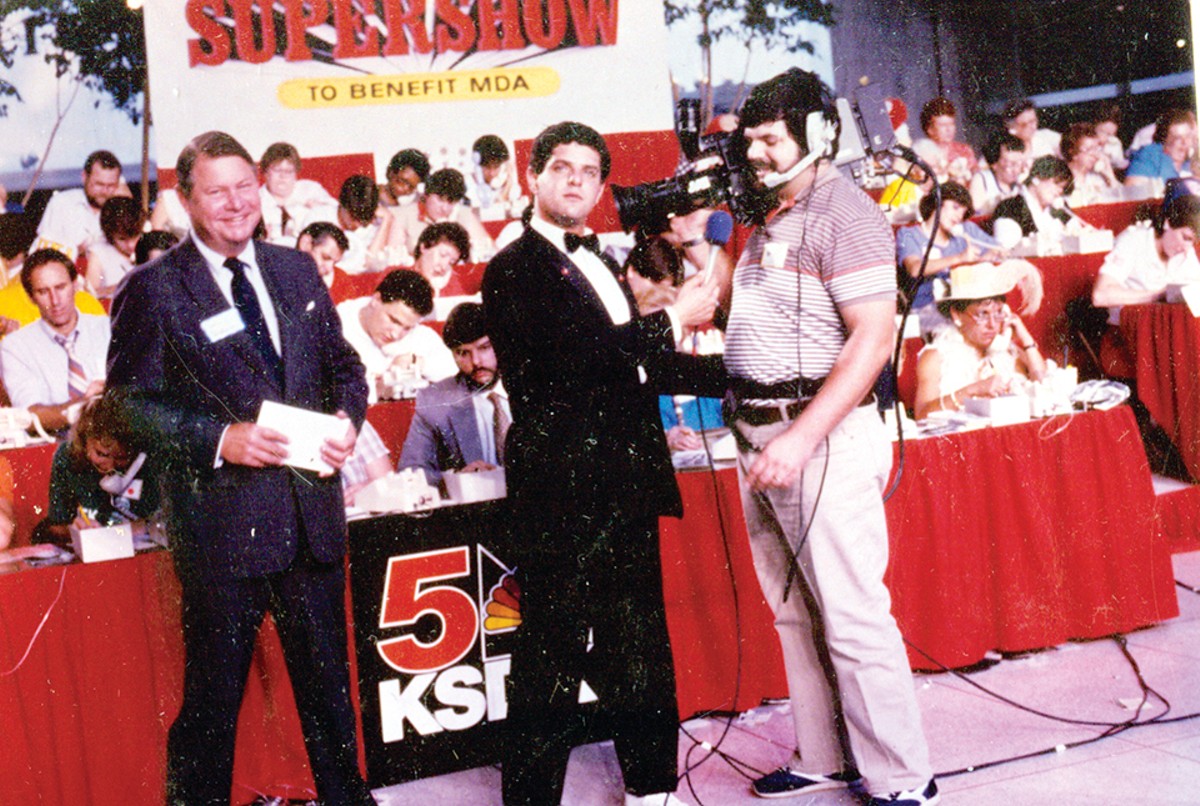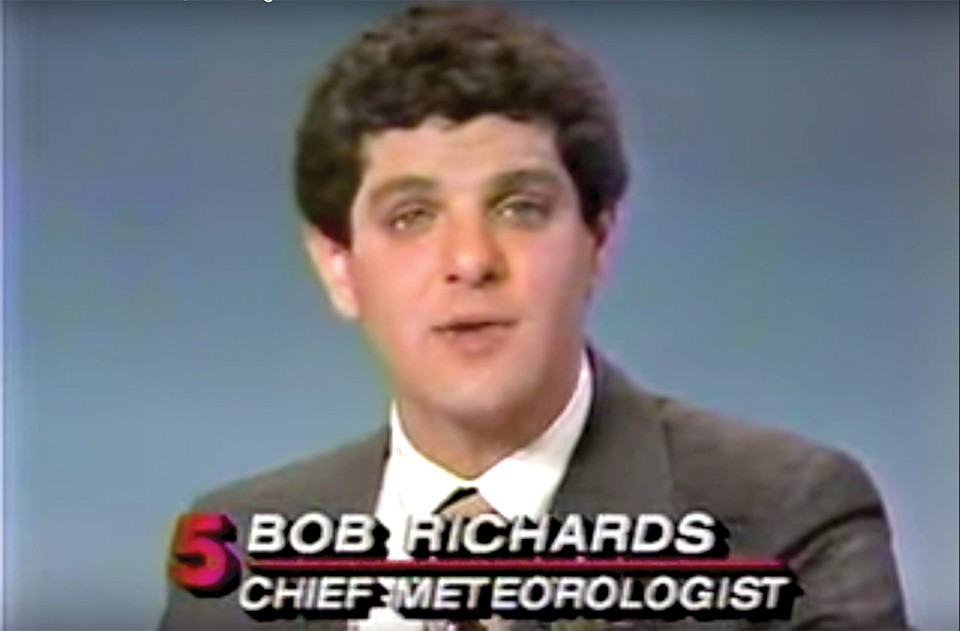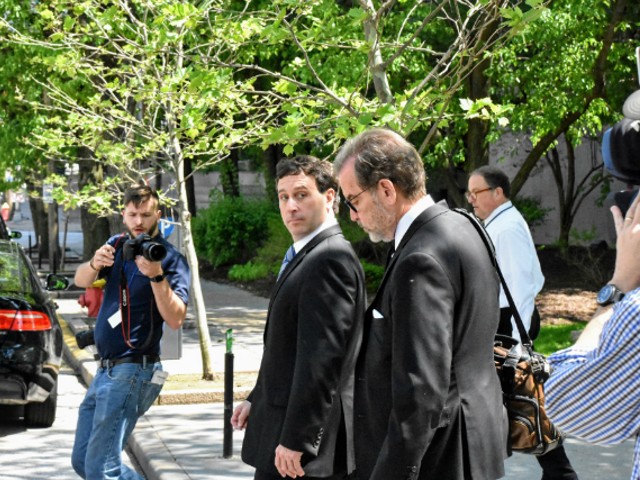When Steve and D.C. reported for work on March 23, 1994, at around 4:45 a.m., one of their producers was waiting for them at the door. This was highly unusual.
"He just said, 'Guys, there's some really bad news.'" Wilhelm remembers. "And that guy — he would play pranks on us a lot. So we really didn't know if we could take it seriously at first, you know? I said to him, 'You're joking. Come on, that's not funny.' And then I could see that he wasn't laughing and was like, 'No, Bob Richards, around midnight, took his plane out, nosedived it straight into the tarmac and he's dead.' And I mean, I was just absolutely stunned."
Corbett got a call from his sister in the middle of the night; she left a message, because she knew the two often flew together, and her first thought was that Corbett was in the cockpit with Richards, and that there had been some terrible malfunction.
"Then the [KSDK] assignment editor called very early, and I think he even offered to let me stay home that day," Corbett says. "I said 'Nope, nope — gotta soldier on.' You know, it's news. It's your job."
Foss awoke to a call around the same time from her former colleague Julius Hunter. Larry Connors, a longtime KMOV anchor, was also a private pilot, so he had connections at Spirit of St. Louis who tipped him off to what had happened. Connors called Hunter, and Hunter called Foss. Foss, in turn, called Dick Ford.
"But Bob's body had not been identified. We knew it was his plane. And we — as we would for anybody — we did not report his name [at first], and it wasn't a cover up or anything like that," Foss says. "It was because his body had not been identified and his family had not been notified. Other stations were not so careful with that information. And that was hurtful, but you know, you go on."
Stratton reported to work as usual at the health care facility in Granite City, Illinois, where she was employed at the time. When she arrived, her coworkers immediately told her to go home; her roommate would be waiting for her there.
Confused, she drove back to her apartment, where her roommate was standing in the living room, watching TV with her hands over her mouth. Stratton turned around and saw the report of Richards' presumed death and sat down in disbelief.
Phillips got a call from his boss around 2:45 a.m. The guy was a prankster, so Phillips' first reaction was, "Fuck you!" Unfortunately, it wasn't a terrible joke. Phillips was on vacation at the time, but he came in and they discussed what they knew on the show that morning, though they couldn't even say Richards had died yet on air.
At first, while the Federal Aviation Administration was investigating the crash and before the medical examiner's report was released, some hoped that it had been a terrible accident — not a suicide.
"I knew exactly what had happened," Corbett says. "We sat out there and talked on the curb, and when his wife found out [about Henry] she moved out and went up to Chicago, and he flew up there in his plane and talked several times about how easy it would be to fix things by just planting it in a cornfield and having it be done. So I knew that seed was in his brain."
KSDK general manager and vice president John Kuenke also said later that Richards had spoken to him several times of thoughts of suicide in his final days but maintained that he didn't want to take time off, that being on the air would be "therapeutic" for him.
"If you said to me, 'If you don't take that phone call or do that interview with Donna Henry, he doesn't kill himself,' well then of course we wouldn't do the interview, but you don't get that kind of hindsight," Wilhelm says. "But as we know, in life, things do get better. People love a second chance. I think Bob would've absolutely had no problem continuing his career even if [Channel] 5 had fired him, just by simply saying, publicly, 'Hey, I obviously made some mistakes and I'm a man that is flawed.' I think everybody would have been fine with that and would've given him a second chance. I just never believed in a million years that he would do something like that. If I could change it, I would."
In the ensuing days, there was even more of a media frenzy.
"There were two shows that came out to interview me and set up cameras," Phillips says, "and all they wanted was dirt, and I couldn't give it to them."
After Richards' death, as many as 23 women claimed they had a relationship with him; Henry had actually heard from and met with a few of them after she called into the Steve and D.C. show.
"Steve and D.C. had a golden nugget for the kind of show that they did," Phillips says. "It's easy to blame them. I believed at the time that they were at fault for Bob's death, but I don't believe that now."
For Karen Foss, reporting on the death of a colleague was hard enough, let alone under such circumstances.
"It isn't the first time that I've had — I or others — have had to report on the death of a colleague or coworker or someone that we knew personally," Foss says. "But it was particularly painful under these circumstances. And I felt very bad for this woman. I could understand why she'd gone public. He had trashed her and said she was a lunatic and obsessed fan and that didn't seem to be the truth. Or the whole truth, certainly.
"I have never looked back at those tapes and I'm sure we looked very dashed. It's always with you. That was a major trauma, and it's not something you just put away."
The world has changed greatly since Richards' death 25 years ago. In 1994, there was a lot of hesitation to cover the scandal before and after his passing, as media was more reluctant to report on the private lives of public figures in general. In the March 30, 1994, edition of the Riverfront Times, then-publisher Ray Hartmann shared his unvarnished thoughts on Richards and the onslaught of press surrounding his affair and suicide.
"The apparent suicide last week of KSDK-TV weathercaster Bob Richards — following five days of embarrassing public coverage of his personal life — is ultimately the responsibility of no one other than Richards himself. But one inescapable fact remains, regardless of how desperately members of the media would like to escape it. Bob Richards' personal life — or more precisely, the personal life of Robert Schwartz (his real name) — was not legitimate news. This is, of course, hotly disputed by many, if not most journalists. The conventional non-wisdom of the media, as well as other devotees of sleaze, is that loss of privacy and personal dignity 'goes with the territory' for celebrities and others in the public eye. This is, we are told, 'the price one pays' for the fame and fortune of celebrity. What garbage. Maybe it sounds like an antiquated thought, but judging what is news (and what is not) is supposed to be a complex and delicate business."
In the column, Hartmann argues that Richards wasn't tasked with the same "grave responsibility" of public figures such as "the president or the governor or the mayor or the chief of police," and as such, didn't deserve to have his personal life scrutinized by the press. "No one is using any standards," Hartmann wrote. "And no one seems to care that every time you take a piece out of Bob Richards, you take a bigger piece out of Robert Schwartz."
Over the past two-plus decades, this deferential approach and tone to covering people in the public eye and community has started to evaporate. It's hard to imagine journalists having these same conflicted feelings today, especially given the evidence against Richards supplied by Henry.
At first blush, the story of Bob Richards seems fairly black and white: a perfect-seeming family man leading a secret and scandalous double life. Journalists and people in the community argued that the order of protection against Richards wasn't news and should never have been reported in the first place. Fingers were pointed. Perhaps if a similar situation happened today, we would believe the woman immediately. In the past few years, previously untouchable media figures like Matt Lauer, Bill O'Reilly and Tavis Smiley have been forced out of high-profile positions in broadcast journalism due to affairs and allegations of sexual harassment and abuse of power. Considering the stalking and harassment charges leveled against Richards — to say nothing of the 23 alleged consensual affairs — it's hard to imagine this scandal not costing him his job today.
As often happens in life, though, the more you learn about Richards, the hazier it becomes. Almost everyone interviewed for this story referred to Richards as "complex" or "complicated," and wrestling with demons, although they all acknowledge that he was far from blameless in this situation.
"I think he was two people," Phillips says. "He was the person I knew on television and radio, and he was Robert Schwartz, who probably had more strength than Bob Richards. I think it was Bob Richards that killed Bob Schwartz. I know that sounds a little movie-esque, but that's my own assessment."
Corbett hopes that people remember Richards as more than the guy who closed down the Spirit of St. Louis Airport for half a day.
"I was always taught if you can get past thoughts of suicide and get on the other side, once you get past that, the bottom part of the pit of the valley, that you can rise above it," Corbett says. "He spent more time in that deep valley than any of us thought."
Corbett is still in contact with Kathy, who has since remarried; their daughter, Tricia, now has a family of her own. Kathy, through Corbett, declined to be interviewed for this story.
"You asked me if I thought things would be different [today]. I don't know," he says. "It was very public and very ugly. The wound has grown over and there's not a scab there. Just know that his wife has emerged stronger and her daughter has prospered and is doing well. So if anything good came out of this, it's that."







